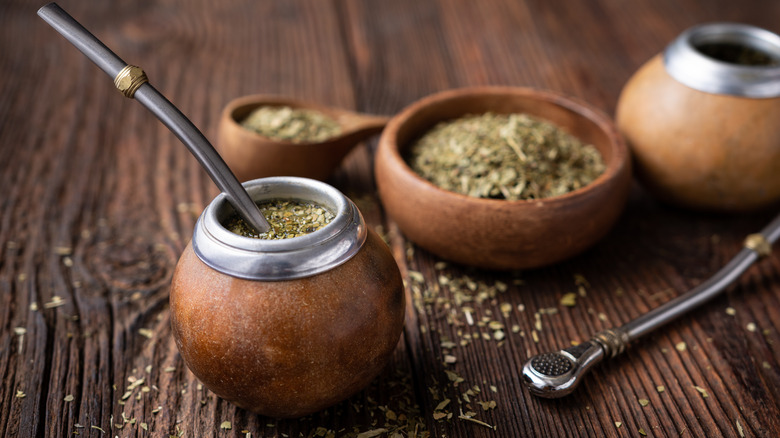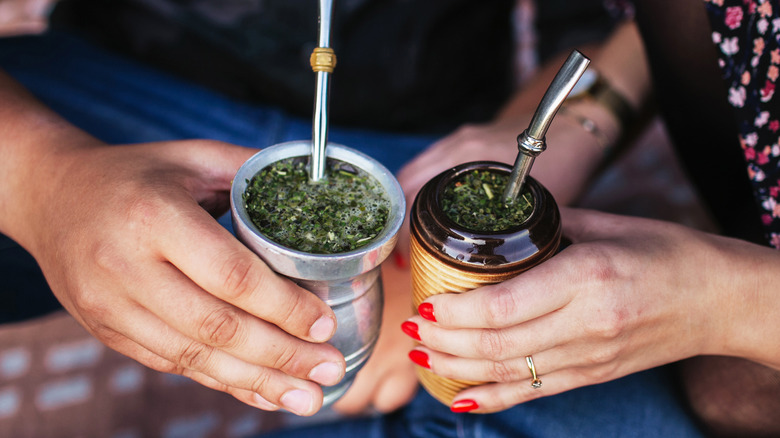The Fascinating History Of Yerba Mate
Yerba mate has been an increasingly popular bottle on the wellness beverage scene in recent years. Often touted as a suitable replacement for coffee, the herbal tea is boasted for having a boost like the bean but without the jitters.
Several health benefits have been attributed to yerba mate, including having more antioxidants than green tea, containing many important vitamins and minerals, helping with brain fog and focus, and the ability to possibly improve the effectiveness of your workouts as well as aid in weight loss and belly fat, amongst others (via Healthline).
However, although it may provide a caffeine lift like coffee, the similarities pretty much stop there — especially when it comes to taste. According to food writer Nate Teague of tastylicious, yerba mate has been described as having a grassy, earthy flavor. In addition, it's green in color, bitter on the tongue, and the smell of its leaves has been likened to eucalyptus. Whether or not that sounds like an intriguing addition to your morning mug, the tea's rich and fascinating history is worth a deep dive.
Cup of culture
Yerba mate has been used for centuries in countries spanning most of South America. The leaves are from an evergreen tree that grows in Argentina, Paraguay, and Brazil. From steeping into a tea to infusions to chewing the leaves raw, its method and purpose of consumption run the gamut. The drinking of the tea is usually a special experience as part of a social gathering, ceremony, or magical ritual.
What we know of as modern-day yerba mate is most similar to that the Guarani tribes prepared. They toasted, milled, and dried the leaves as is typically done today and consumed the tea in a small gourd with a straw (via matero). The Guarani often used the tea for religious and medicinal practices. They likened it to "drinking the power of the jungle," and it soon became a means of currency amongst groups.
Jesuit missionaries are mainly responsible for the cultivation of yerba mate once its popularity grew after the Spanish colonization of South America brought it to other Spanish territories around the globe. Today, Argentina exports the most yerba mate, but brewed bottles and bags can be found on shelves worldwide (via Taraguii).

